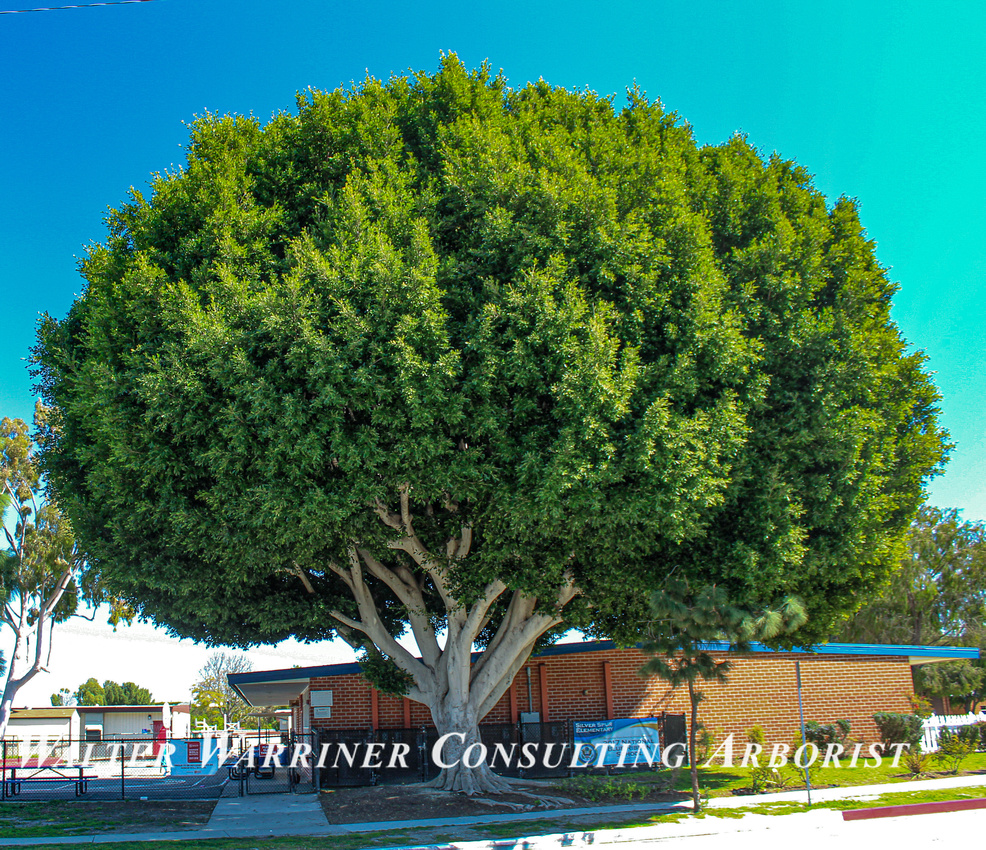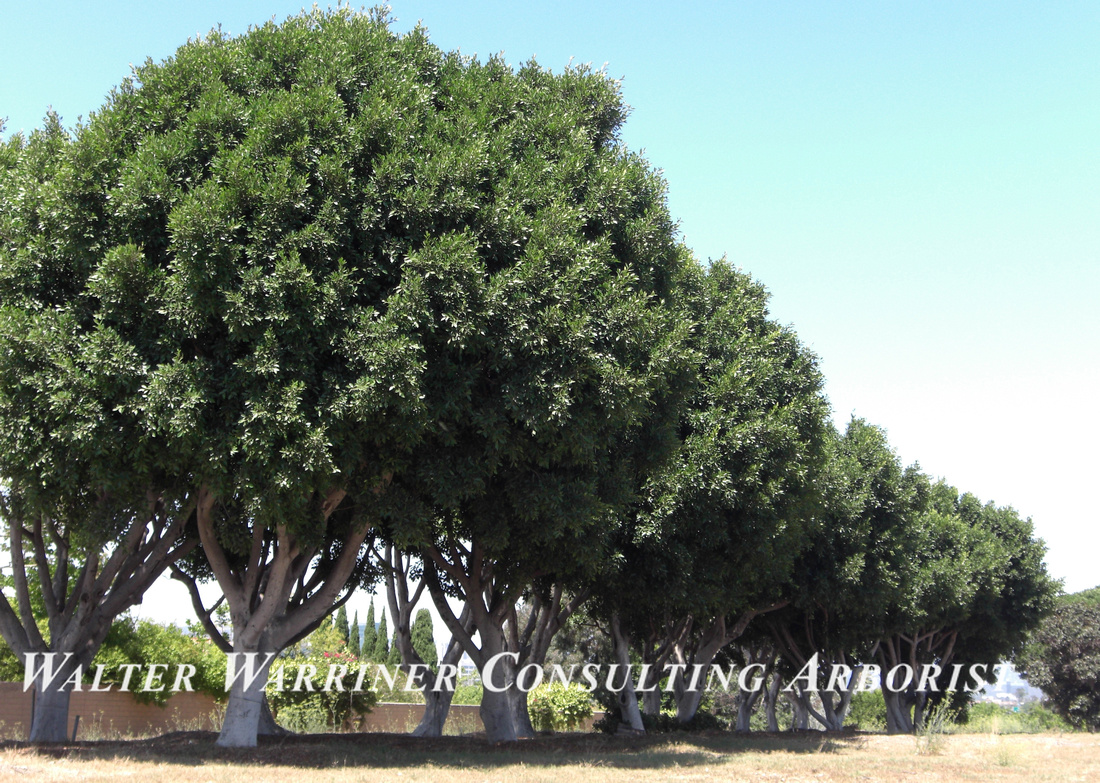The Wonderful Ficus Tree
The Ficus (Ficus microcarpa), is a fast growing, broad-headed, evergreen tree that can reach a mature height of 60 feet or more with an equal sized canopy spread. They grow in full sun or partial shade, thrive in various soils and are moderately drought tolerant. With age they will naturally develop a large dense canopy. Their canopies have glossy, dark green, leathery leaves on large, branches. They produce new growth year round that is a light rose to chartreuse color, giving it an attractive two-toned effect. With their broad canopies Ficus make an excellent tree for shading school campuses. They will tolerate several different types pruning treatments and can be cultivated into a hedge, screen or barrier. Regular pruning can also help to deter excessive fruit production, which can stain cars and sidewalks and are generally messy on paved and other hard surfaces. When left un-pruned they will cast deep shade. Ficus trunks can grow to three or four feet in diameter with buttressing roots at the flare to form an extensive surface root system that needs a large area to grow. This species of Ficus does not produce aerial roots for physical support like other species of Ficus and relies on a broad root plate instead. They can tolerate a high level of root pruning provided their stability is not compromised. However, if root pruning is done improperly they will respond with copious amounts of root shoots that will develop into a larger woody mass than it was before they were cut.
The ficus, more specifically, the Ficus microcarpa and its cousin Ficus microcarpa ‘Nitida’ gained a reputation for being a tree with a “terrible root system”. But this is not really the case. Ficus were planted all over the place from 50’s and 60’s well into the late 70’s until municipalities realized what they will do to an infrastructure with their roots.The interesting fact about Ficus is that with the advent of iTree and urban foresters now having the capability to quantify environmental benefits, the Ficus turns out to have some excellent qualities.
The large ficus tree you see in these photos have the capacity to hold upwards of 3,000 gallons of water in its foliage and branches during a single rain event. That water would otherwise run into the storm drain system and drain into the ocean. It reduced atmospheric carbon by as much as 500 pounds. Most car owners of an average mid-sized sedan drive 12,000 miles a generating about 11,000 pounds of CO2 every year.
Note the dark color on the leaves and branches – that is the particulate matter in the air that is collected by the tree. Now that the tree is gone, where do you think all that particulate matter ends up? The canopy shaded several hundred square feet on asphalt and concrete surface – helping to reduce the urban heat island effect. Trees provide much more than just these benefits that I’ve already mentioned. Ficus trees do much more for the urban environment than we originally thought. I think we need to start conserving them.
A single massive Ficus like the individuals in this photos is not enough. Urban areas could use more Ficus.





